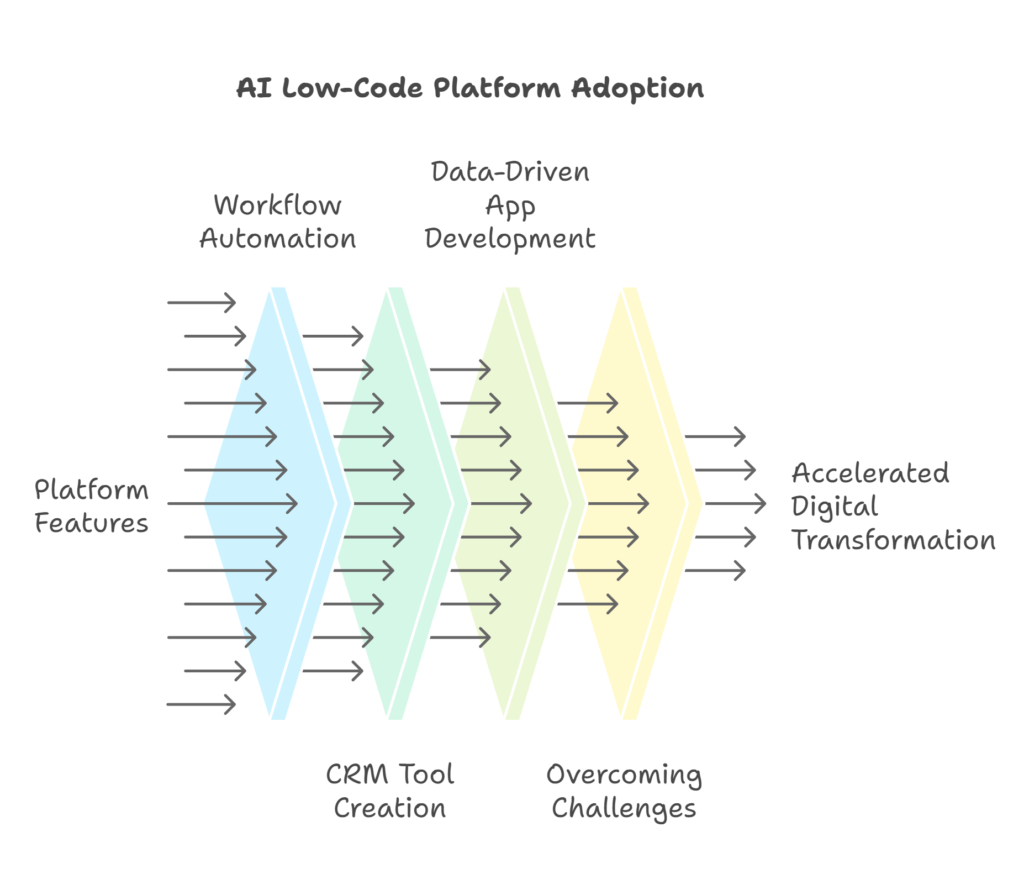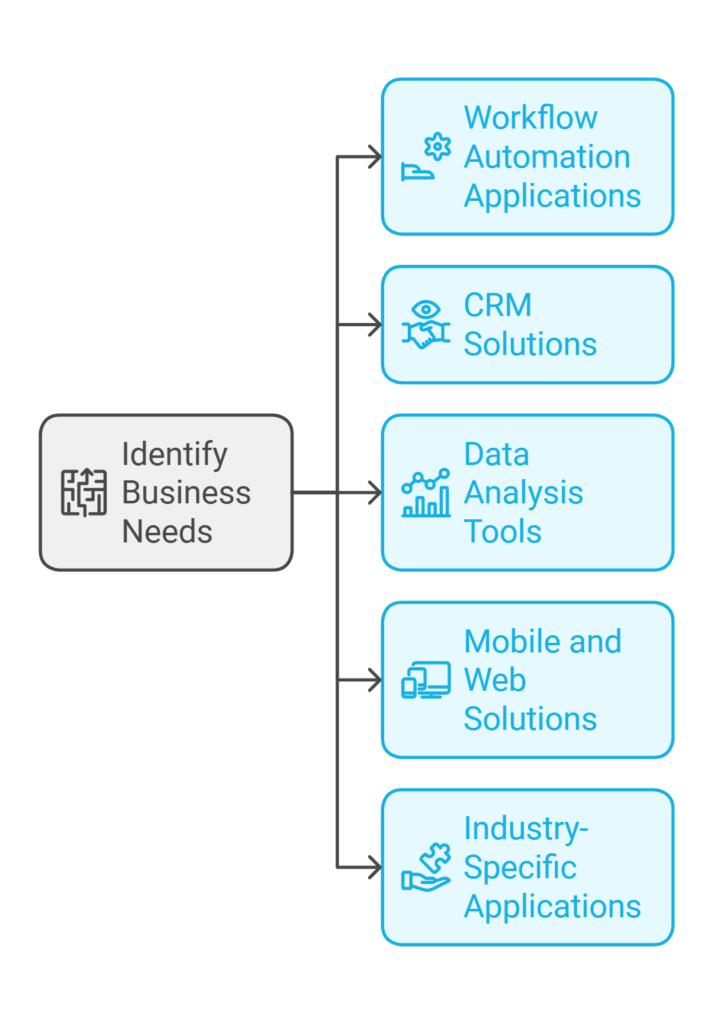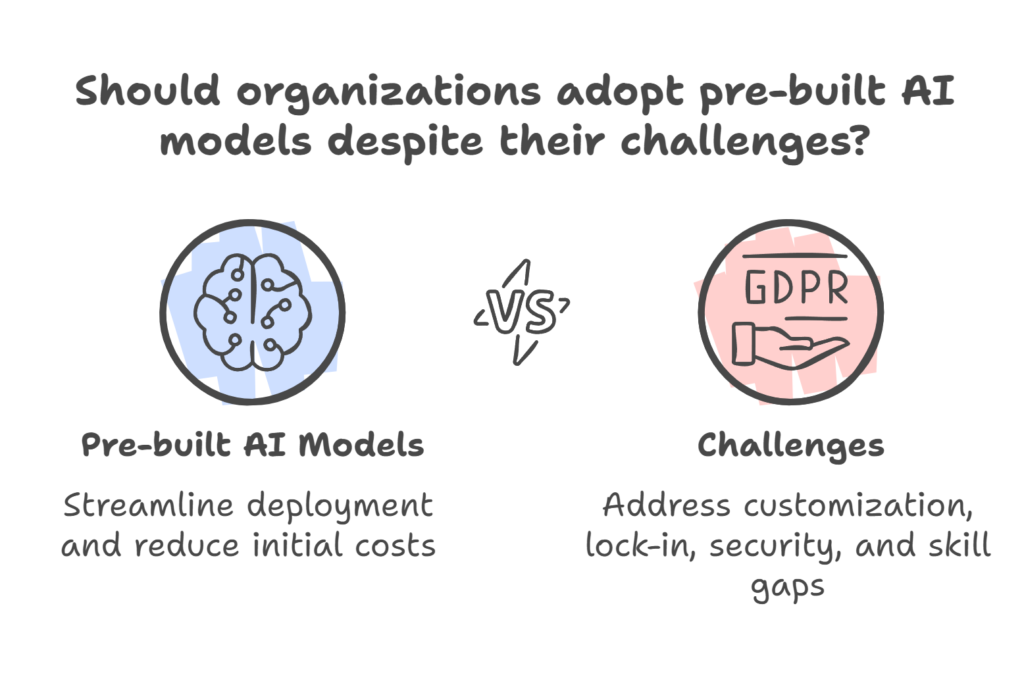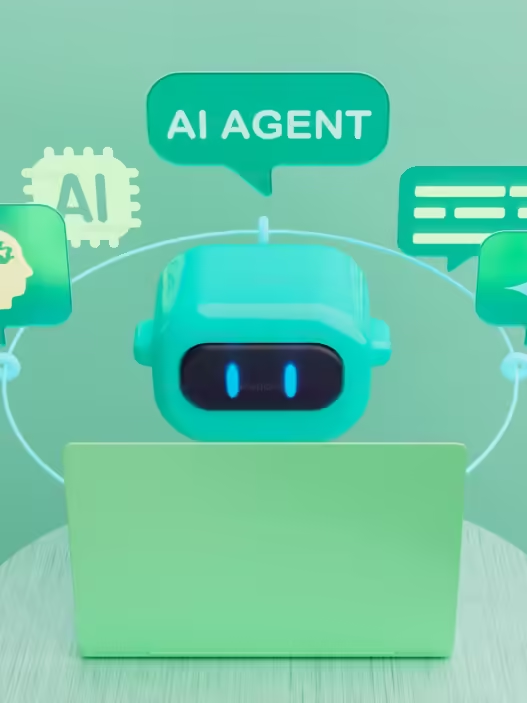TLDR: AI low-code platforms combine the simplicity of low-code development with the power of AI, enabling businesses to build applications faster, reduce costs, and foster collaboration between developers and non-developers. These platforms feature drag-and-drop interfaces, pre-built AI models, and cloud-native scalability, making them ideal for automating workflows, creating CRM tools, and developing data-driven applications. Despite challenges like limited customization, vendor lock-in, and security risks, their adoption is surging due to their ability to democratize AI, address IT skill shortages, and accelerate digital transformation across industries.

The rise of AI-powered low-code platforms is transforming how businesses approach application development, with a projected 80% of businesses expected to use low-code for mission-critical applications by 2029. These platforms empower users with basic coding skills to quickly build AI-powered applications, integrating advanced capabilities like machine learning and automation into user-friendly development frameworks.
Key Features of AI Low-Code Platforms
- Accelerated Development: Deploy applications up to 4.6 times faster than traditional methods, enhancing agility.
- Cost Efficiency: Minimize reliance on large teams and extensive coding, streamlining the development process.
- Improved Collaboration: Foster innovation by bridging IT and business teams, encouraging co-development across skill levels.
- Fast Prototyping: Quickly create prototypes for iterative feedback, improving user satisfaction before full deployment.
- AI Integration: Utilize pre-built AI models for tasks like object detection and language processing, making AI accessible.
- Cloud-Centric Architecture: Leverage cloud-native designs for scalable and flexible applications, reducing management overhead.
Applications of Low-Code Platforms

- Workflow Automation Applications: Automate repetitive tasks such as onboarding and expense approvals, enhancing operational efficiency.
- CRM Solutions: Build systems for tracking sales and managing customer interactions, boosting satisfaction and loyalty.
- Data Analysis Tools: Create applications to analyze data and generate actionable reports, supporting data-driven decision-making.
- Mobile and Web Solutions: Develop user-friendly applications for e-commerce and internal communication, improving accessibility.
- Industry-Specific Applications: Customize solutions to address unique compliance and operational needs across various industries.
Challenges of AI Low-Code Platforms
- Limited Customization: Pre-built AI models may not accommodate specialized requirements, necessitating advanced coding skills for customization.
- Vendor Lock-In: Businesses may become overly reliant on a single platform, restricting flexibility and increasing costs for switching providers.
- Security and Privacy Risks: Using third-party AI models can expose sensitive data to vulnerabilities, requiring robust data protection measures.
- Skill Gap: Users need foundational knowledge of AI concepts, prompting organizations to invest in training to enhance employee skills.

Market Growth and Adoption Rates
- By 2024, over 65% of internal business applications are expected to be developed using low-code platforms.
- The low-code market size is projected to grow from over $20 billion in 2023 to $32 billion in 2024, with a CAGR of 26.1%.
- Growth drivers include:
- The increasing need for rapid application development in dynamic markets.
- The rise of citizen developers who are non-technical employees building applications.
- A shortage of skilled IT professionals, pushing businesses to adopt low-code solutions.
- The integration of pre-built AI models, which simplifies AI application development.
Examples of Low-Code Platforms
- Microsoft PowerApps
- Seamless Integration: Works effortlessly with Microsoft services like Office 365, Dynamics 365, and Power BI, leveraging existing data and tools.
- User-Friendly Design: Offers drag-and-drop functionality with pre-built AI components, enabling quick app creation for users with minimal coding skills.
- Zoho Creator
- Intuitive Interface: Features a straightforward drag-and-drop design for accessible application development.
- AI and Templates: Includes powerful analytics and pre-built templates to streamline development and enhance decision-making.
The Road Ahead for AI Low-Code Platforms
The convergence of low-code development and AI is set to redefine how businesses innovate. By addressing the challenges of traditional development—such as time, cost, and skill requirements AI low-code platforms provide a competitive edge. However, organizations must navigate challenges like vendor lock-in and skill gaps to fully unlock their potential.
As the market continues to grow, businesses should evaluate these platforms not just as tools for rapid development but as strategic enablers of digital transformation.
Sources: Brilworks Blog, Geeksforgeeks blog ,Gartner News Room, Mendix resources.




















